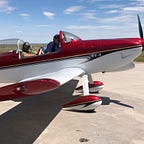The Ceylon Planters’ Rifle Corps
Ceylon Planters’ Rifle Corps in the First World War
By the dawn of the 20th century Ceylon was a prosperous colony. Tea and rubber plantations produced a great deal of the island’s wealth. Spread mainly in the misty highlands, on land seized by the Crown and sold to British investors at nominal rates, the sprawling estates were originally planted with coffee. But a blight decimated the bushes in the 1870s and tea (Camellia sinensis) was planted in lieu. This proved successful, with Ceylon Tea gaining a reputation as the world’s best in a few years’ time.
The backbone of the industry was its indentured labour, mostly brought in from southern India, who lived on the estates. They were supervised by British ‘planters’, usually recruited at a relatively young age directly from Britain. The class-system was firmly in place, with planters being exclusively British (i.e. ‘white’) and from ‘good’ schools. Planters’ Clubs were scattered around the hill towns in Ceylon. Equipped with tennis courts, rugger grounds and bars, the planters would congregate there on weekends, taking a break from what must have been a lonely, albeit comfortable, life on isolated estate bungalows — at least for the bachelors.
